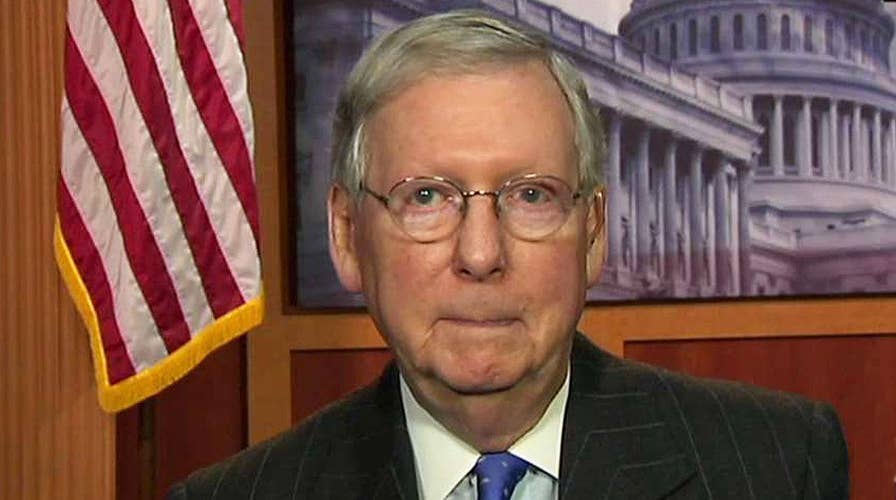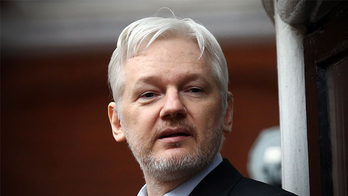Sen. Mitch McConnell takes on the Gorsuch filibuster threat
On 'The First 100 Days,' the Senate majority leader slams Democrats' legislative resistance
Senate Majority Leader Mitch McConnell is preparing to deploy the “nuclear option” to confirm Supreme Court nominee Neil Gorsuch.
So what exactly is the nuclear option?
In short, it’s an extreme parliamentary maneuver to change the Senate precedent and lower the bar to break a filibuster on a Supreme Court nominee from 60 votes to 51 votes.
Here’s how this will likely go down over the course of Thursday and Friday:
McConnell filed cloture to end debate on Gorsuch’s nomination Tuesday. By rule, a cloture petition to break a filibuster “ripens” two days later. The Senate then automatically takes a vote to halt debate (known as “invoking cloture”) one hour after the Senate meets.
This will happen Thursday.
It is the current precedent of the Senate to require 60 yeas to stop debate. The problem for Senate Republicans is they only have 52 members. Four Democrats will vote with the GOP to end debate: Sens. Michael Bennet, D-Colo., Heidi Heitkamp, D-N.D., Joe Manchin, D-W.Va., and Joe Donnelly, D-Ind. The latter three will also vote to confirm Gorsuch. However, Bennet, who co-introduced Gorsuch at his confirmation hearing, has not said if he will vote to confirm Gorsuch. Bennet has only said he will vote to break the filibuster.
So, Republicans are four votes shy of ending the filibuster. This is where the nuclear option comes in.
The cloture vote itself will likely fail, ostensibly blocking Gorsuch’s nomination from going to confirmation. But this is the key place for McConnell to attempt to change the precedent. Expect McConnell to switch his vote on the cloture tally from yea to nay so he can be on the “prevailing side” (in this case, the nays). That gives McConnell the right to ask for a revote.
That only needs 51 yeas. Then McConnell can make a motion for the Senate to revote the failed cloture vote. Again, this just needs a majority vote.
Now the Senate is back on the cloture vote. Nothing is debatable at this point. In other words, the Senate can’t extend matters by talking.
This is where McConnell drops the bomb.
McConnell will likely raise a point of order that “the vote on cloture under Rule 22 for all nominations to the Supreme Court is by a majority vote.”
The presiding officer, upon advice from the parliamentarian, will likely rule against McConnell. The officer will cite the Senate’s established precedent of 60 votes, not 51, to break a filibuster. The officer will then declare that the “point of order is not sustained.”
But this is where the Senate can establish a new precedent. McConnell will then ask the Senate to vote to overrule the presiding officer. Expect some fancy language like “Shall the decision of the chair stand as the judgment of the Senate?”
Another roll call vote starts. In this case, Republicans will vote nay, as they don’t want the chair’s ruling to stand. They are voting to establish a new precedent. In other words, the noes must prevail to set a new standard.
And that’s the nuclear option. There’s a new precedent.
Then, at some point later Thursday the Senate will take a new vote to invoke cloture and finish debate on the Gorsuch nomination. They’ll just need a simple majority to invoke cloture under the new precedent.
By rule, opponents of an issue get 30 hours of debate following cloture. That means the Senate likely has to wait until Friday night to get to a final confirmation vote.





